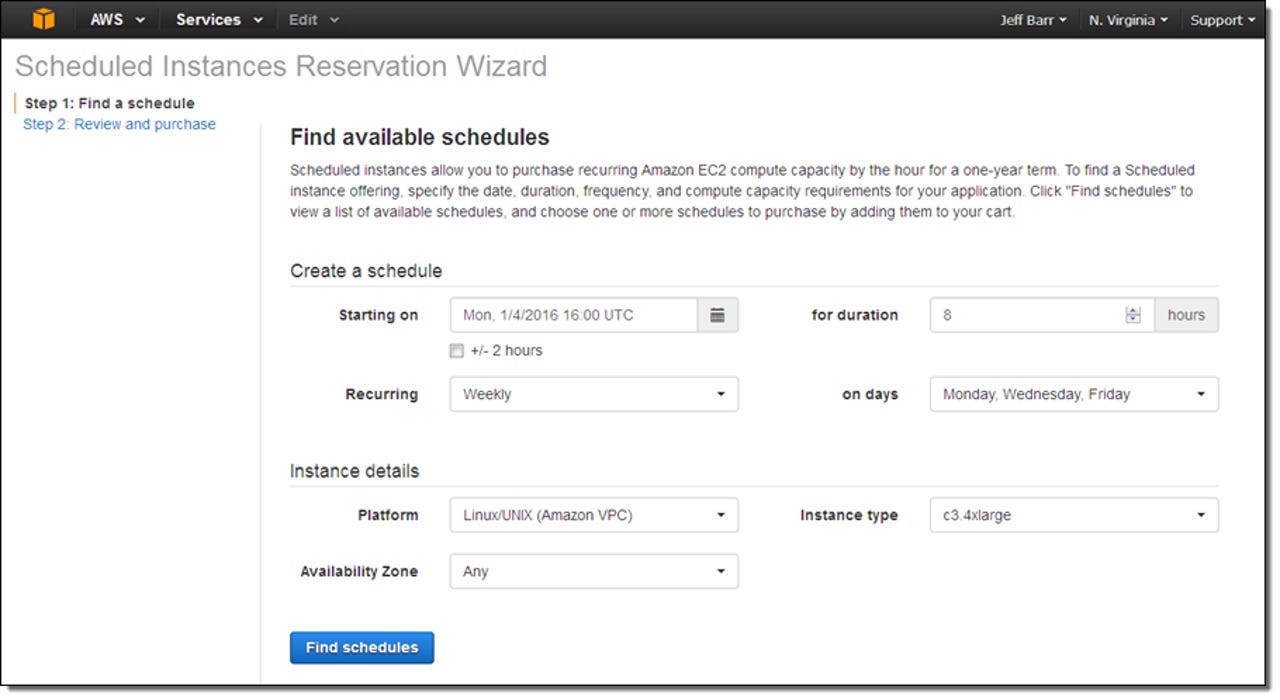AWS now lets customers reserve scheduled, recurring instances


Amazon Web Services is adding a new option of reserved instances for running mission-critical workloads.
Dubbed Scheduled Reserved Instances, these instances allow AWS customers to reserve capacity on a recurring basis -- whether it be daily, weekly, or monthly -- over the course of a one-year term.
According to AWS chief evangelist Jeff Barr, this model offers the potential for rates that are five to 10 percent lower than competing On-Demand rates.
Barr offered a few suggestions as to when scheduled instances might be more fruitful, such as a trucking company optimizing routes and shipments on varying mornings to an animation studio conducing compute-intensive 3D rendering on a nightly basis.
"Each Scheduled Reserved instance becomes active according to the schedule that you chose when you made the purchase," Barr wrote in a blog post.
The scheduling offer joins the original Reserved Instance -- now called Standard Reserved Instances -- which allows customers to reserve Elastic Compute Cloud (EC2) capacity for a one or three year term with use at any time.
Scheduled Reserved instances can be launched from the AWS Command Line Interface, AWS Tools for Windows PowerShell, and the RunScheduledInstances function. Amazon promised future support with Auto Scaling, AWS Lambda, and AWS CloudFormation.
Earlier on Wednesday, AWS unveiled plans to plant a new cloud region in Canada this coming year.
Plotted to be based around Montreal, Quebec, the newly named Canada-Montreal region expands coverage from other North American locations in the United States: US East (Northern Virginia), US West (Northern California), US West (Oregon), and AWS GovCloud (US).
AWS also has a few other developments around the globe in the works this year, including regions in Ohio, China, India and the United Kingdom.
A wind farm will also be going up in Ohio, code named Amazon Wind Farm US Central, and is scheduled to launch operations in May 2017.
Worldwide, the AWS Cloud operates 32 availability zones across 12 geographic regions around the world, with 11 more availability zones and five more regions coming online over the next year.
Screenshot via Amazon Web Services